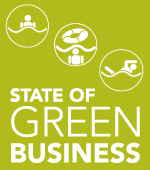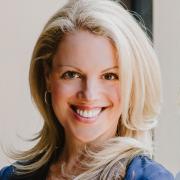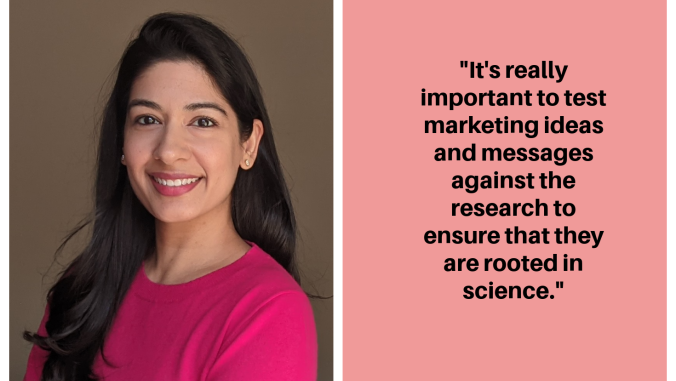Spurring the Feds to Pursue Green from Data Centers to Cafeterias
<p>Michelle Moore is on a green mission. The federal environmental executive with the Council for Environmental Quality offers an insider's view of President Obama's Green Gov Challenge and government efforts to rein in energy use in a conversation with GreenBiz Executive Editor Joel Makower.</p>

The U.S. government isn't known for efficiency, but this could change if President Obama's sustainability initiative takes root.
The Green Gov Challenge was launched by executive order in October 2009 to establish a strategy for energy conservation while setting an example of environmental leadership.
"Our president issued a challenge," said Michelle Moore, the federal environmental executive with the Council for Environmental Quality, who delivered an update on the program at last week's State of Green Business Forum at the National Press Club in Washington, D.C. "My mission is to advance sustainability throughout the federal government."
"Approximately 85 percent of the federal government is situated in communities outside of Washington D.C.," explained Moore, as she enumerated the challenges in funneling unwieldy, far-flung entities down the green path.
The program's intent is to engage federal and military personnel everywhere to contribute ideas. "I was surprised by the extent to which community-building was necessary. There is no magic button to help the whole federal community, although I had hoped there would be an all-staff email somewhere," quipped Moore, who came to her post from the U.S. Green Building Council.
Among Moore's challenges is reducing energy use in buildings, beginning with the energy intensity of federal data centers. "These are huge centers of energy. They were proliferating across government with the potential to undermine our goals," Moore said. The federal government spends upwards of $25 billion to power its offices and operations, so reining in energy usage poses a significant opportunity to prove this program's value.
To track results, Moore adheres to the principle that you manage what you measure. "We believe if you're not keeping score, you're not playing a game," she explained. She relies on tools from the World Resources Institute and other metrics to bolster the reporting process.
But Moore doesn't appear to be stuck in paralysis of analysis. "Implementation, implementation, implementation is at the forefront of our agenda," she added.
Like any manager trying to engage others in a green initiative, Moore had to get the rank and file behind it. "You could say I've got the required 'CEO' buy-in," said said, "so the real question has been, 'How do I get the rest to buy in?' "
Moore began with a federal steering committee on sustainability. She works on a weekly basis with agencies such as the U.S. General Services Administration and the Department of Defense as well as many governmental entities that lie outside the Beltway.
"We reached out to stakeholders and over 16,000 people chimed in," said Moore.
"What we heard back was fascinating," Moore said. "It came down to those experiences that touch federal employees everyday. Ultimately, it is how our little everyday decisions add up that will make or break us."
Feedback revealed some chinks in the armor. For example, one respondent replied, "Energy Efficiency -- you say this is important yet your lights are on at all hours of the day." Others pointed out that green cafeterias should allow people to bring in their own cups instead of filling up in Styrofoam.
"We work to connect the dots," said Moore. "We have a lot of extraordinary professionals in the federal community who've been doing sustainability for 20 and 30 years." Such employees have tacit knowledge on how a process actually works. This has helped demystify how change actually unfolds and lay out expectations for others. "We're trying to build on opportunities for them to exchange information," Moore added. "Events like this conference are sharing tools. So are workshops and webinars."
"We want to help federal agencies put sustainability in the context of what works for them," assured Moore. "We understand that the DoD is different than the EPA, so one size does not fit all."
"We want to hear great ideas," she continued. "We consider ourselves colleagues with private enterprise. We want to help entrepreneurial enterprises succeed. In some cases we are even their customers." Such cooperation embodies the spirit behind public-private partnerships, which have been a mechanism for numerous successful sustainable development initiatives.
"Celebrating success is critical," added Moore, who helps issue green government awards to elevate the work of groups and individuals. "What we do in Washington D.C. matters, but what we do in Fort Dearborn matters just as much."
Moore's goals for this program are not different from the expectations of change agents elsewhere: "Meet or exceed present targets. Have real and reliable stories to share. Lead by example. Practice what we preach."
In an era where green policies are perpetually sidelined by political gridlock, the Green Gov Challenge appears to be a way to make the U.S. government more relevant in terms of sustainability, proving indeed that within every problem lies a solution.
Photos by Goodwin Ogbuehi, http://flickr.com/photos/yoshikatsu





